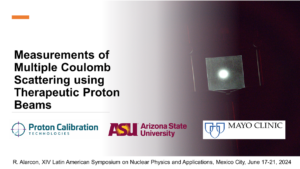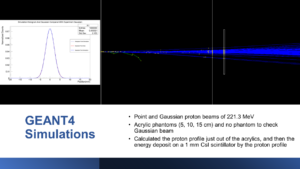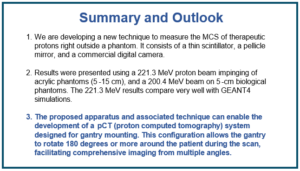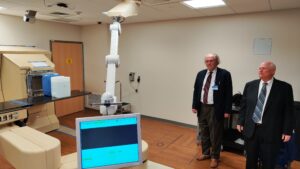
Researchers from the Arizona State University Physics Department, Proton Calibration Technologies, and the Mayo Clinic Arizona Proton Therapy Center recently conducted experimental tests to characterize the proton energy distribution in the synchrotron beam pulses using scintillation crystal photography.

Arizona State University and Proton Calibration Technologies researchers finalize the optical alignment of components in the experimental testbed beamline.
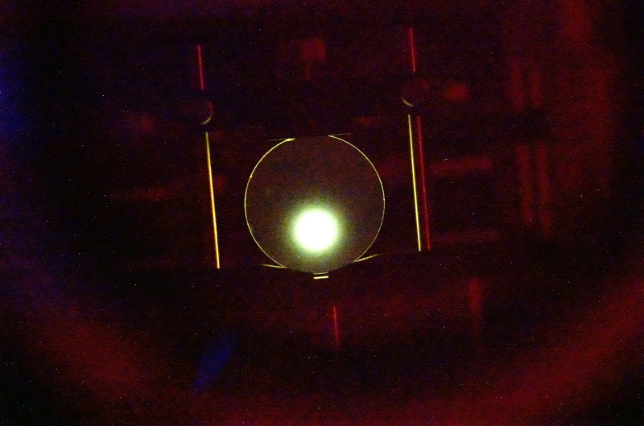
The YAG crystal emits visible photons in proportion to bombardment with 220 MeV protons. Every proton produces some 50 photons at the camera sensor and there are some 10,000,000 per beam pulse. The high intensity spot, 17mm in diameter, indicates a signal strength more than sufficient to proceed with the next set of measurements – sending protons through materials of varying densities. In the next tests a collimating aperture will create one or more mini-beams. Each mini-beam will let us probe the proton relative stopping power of the different phantom materials.
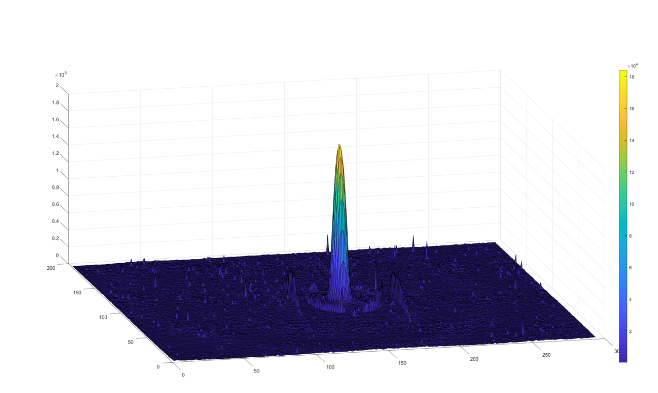
Pictured is a surface map of the light intensity emitted by the scintillation crystal. Notice how sharply the signal stands out with high resolution and excellent signal-to-noise ratio. The steepness of the peak is a good indication of the resolution of mini-beams during the next experimental tests.



